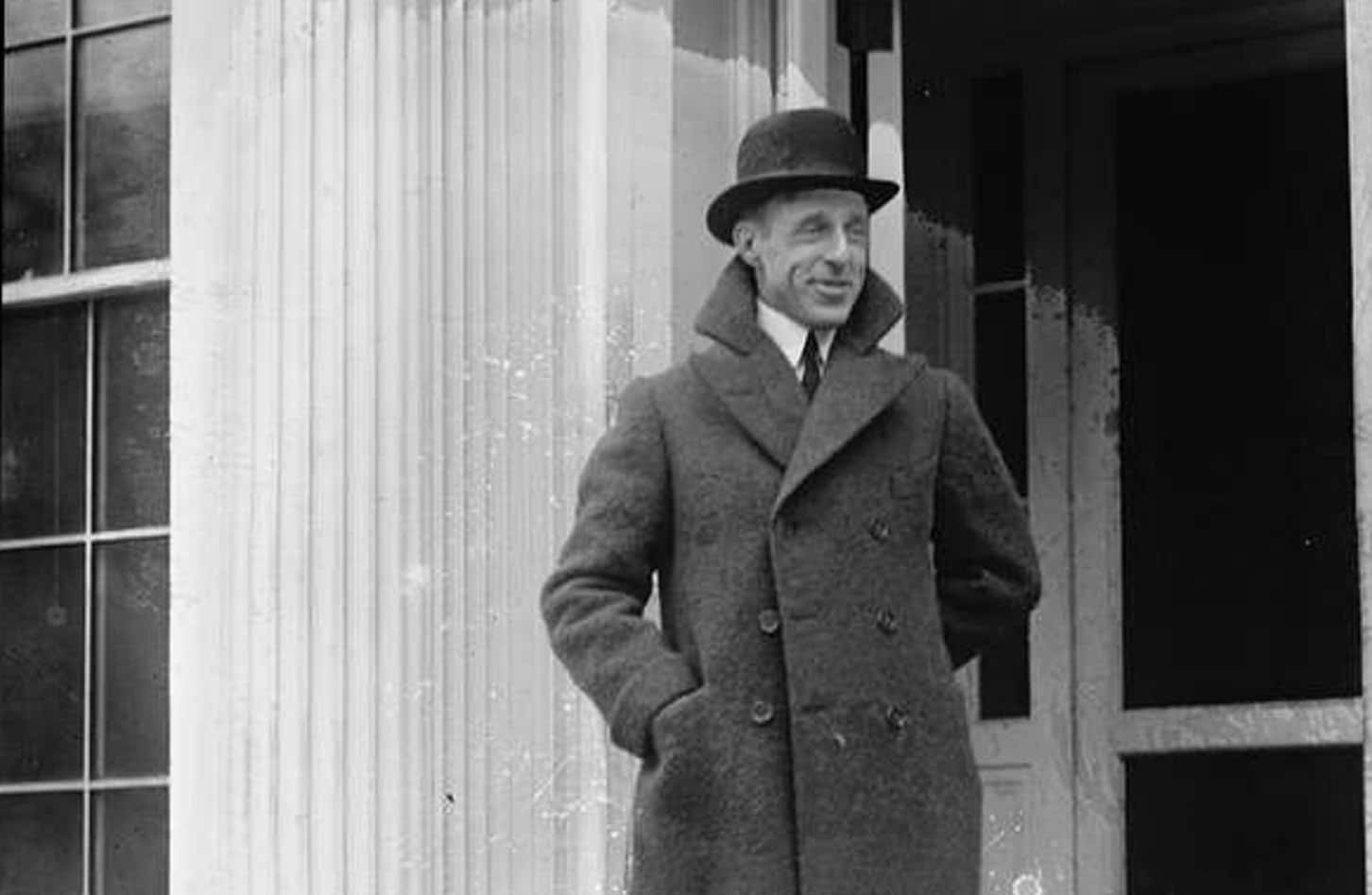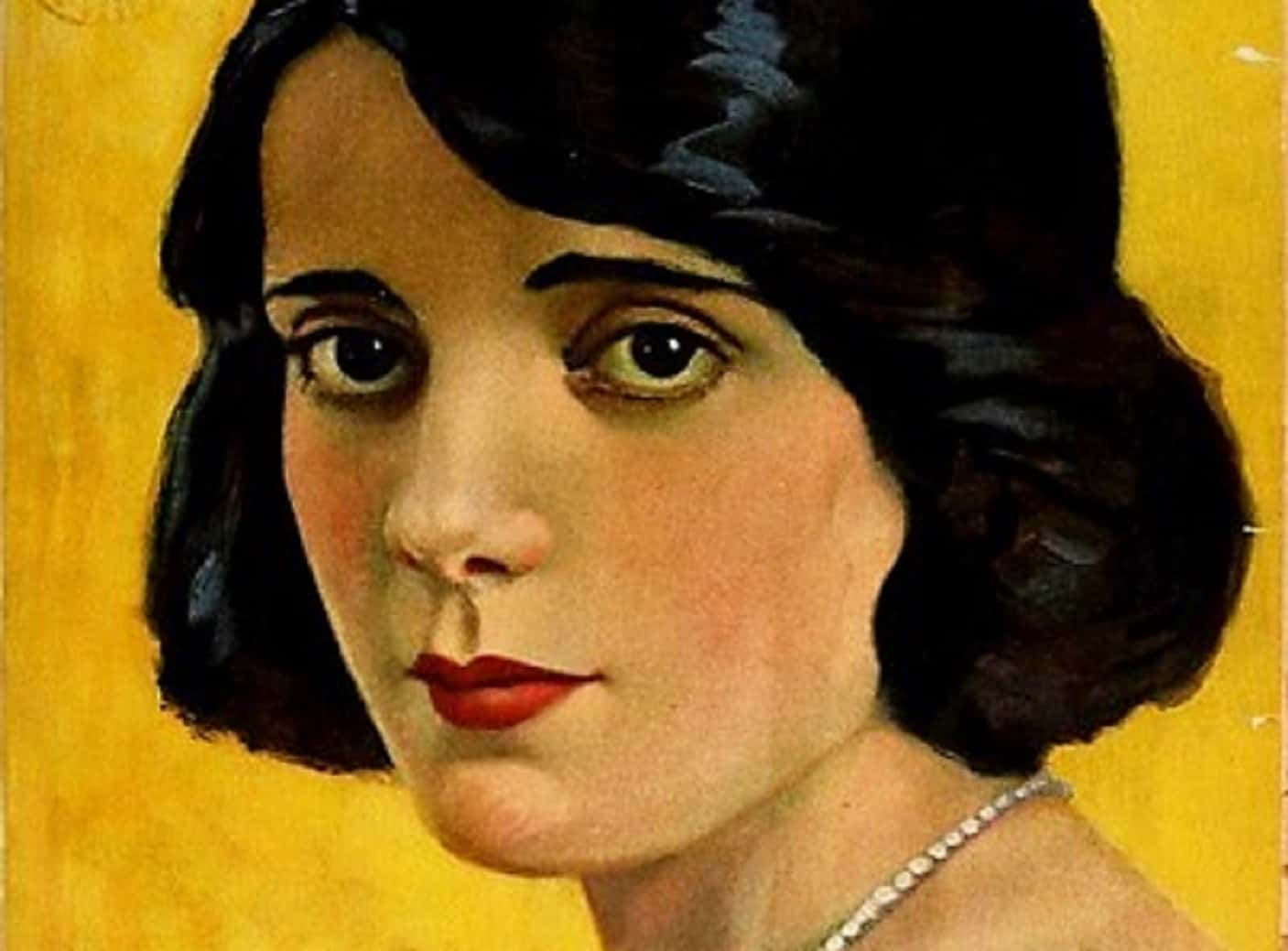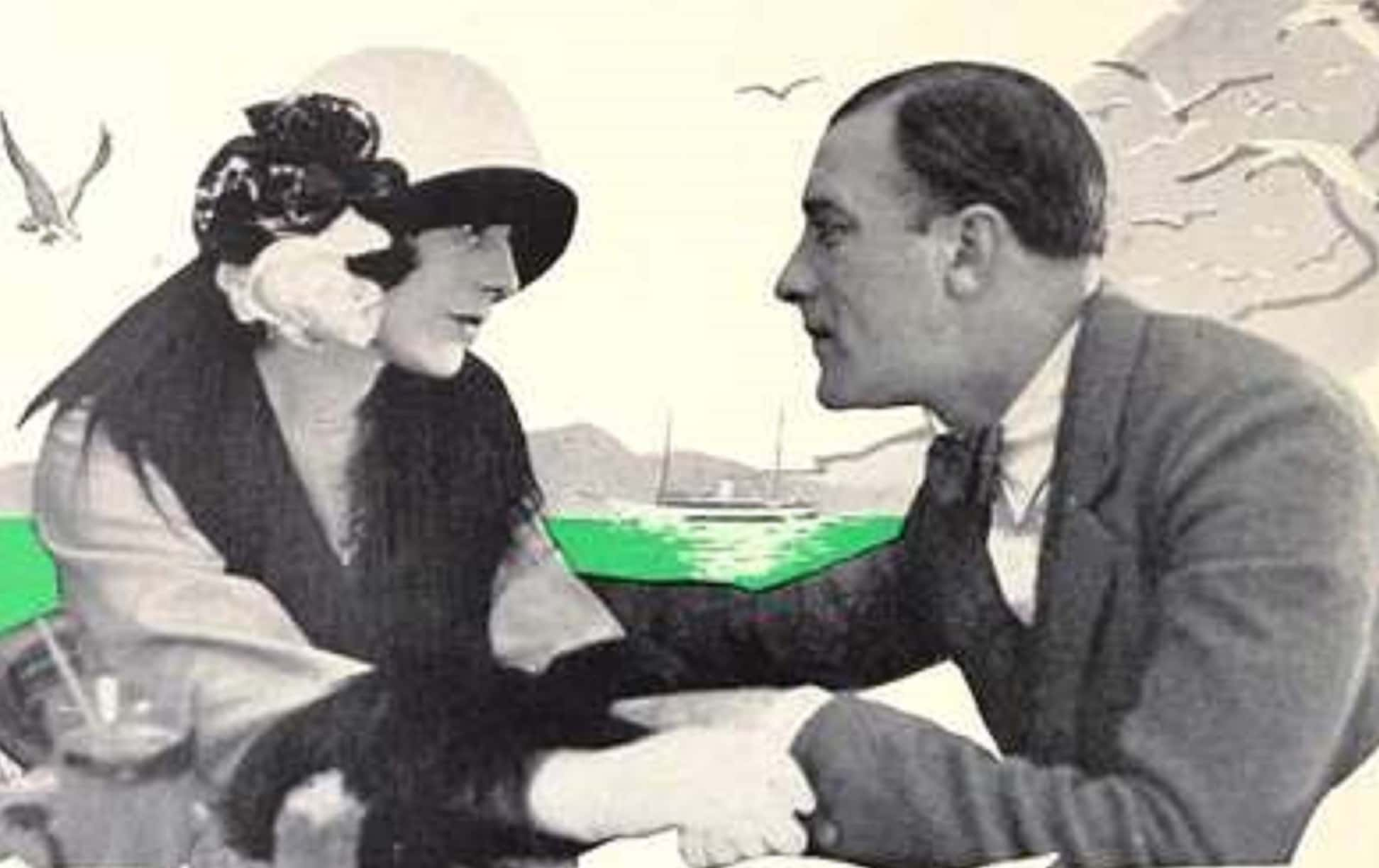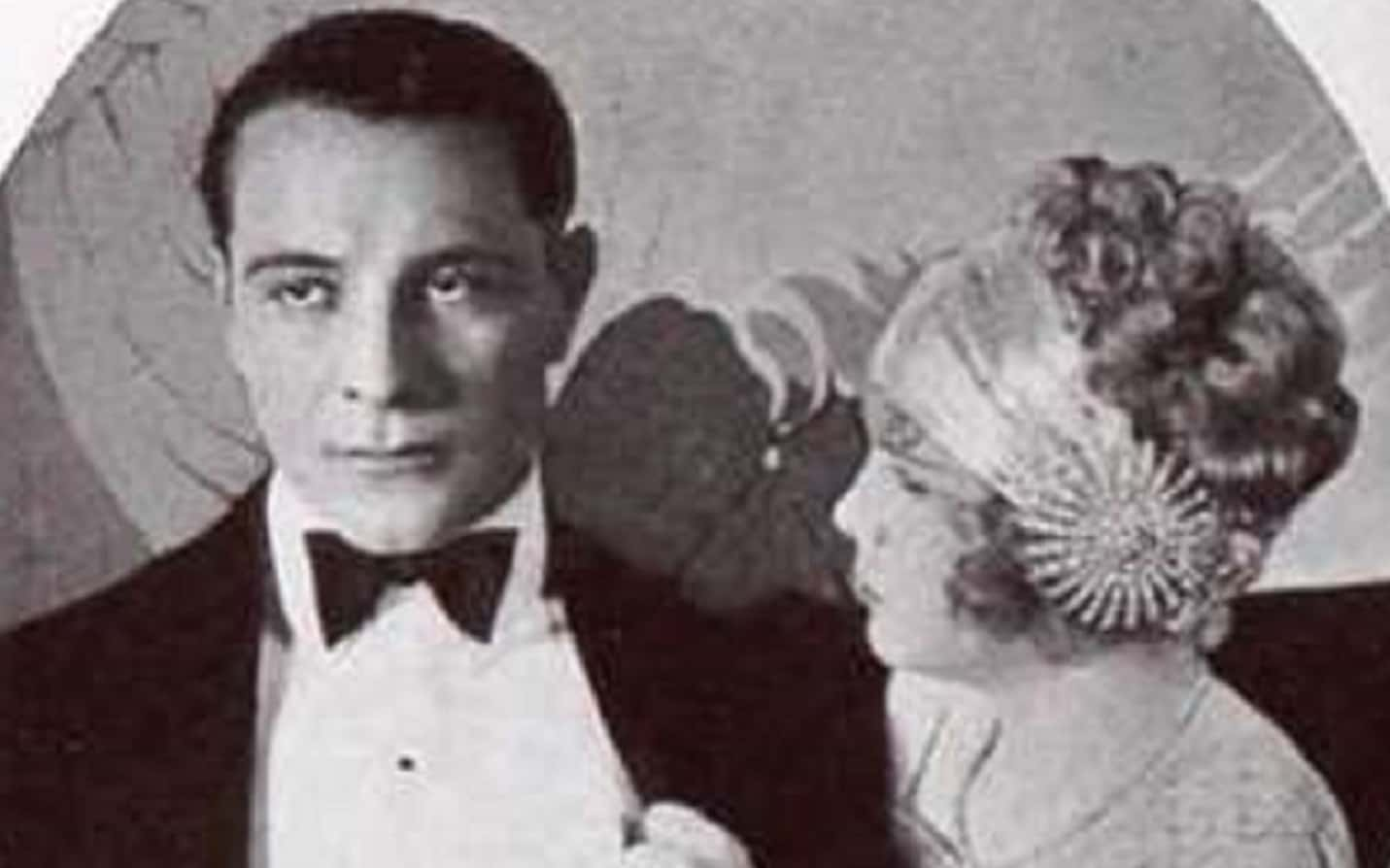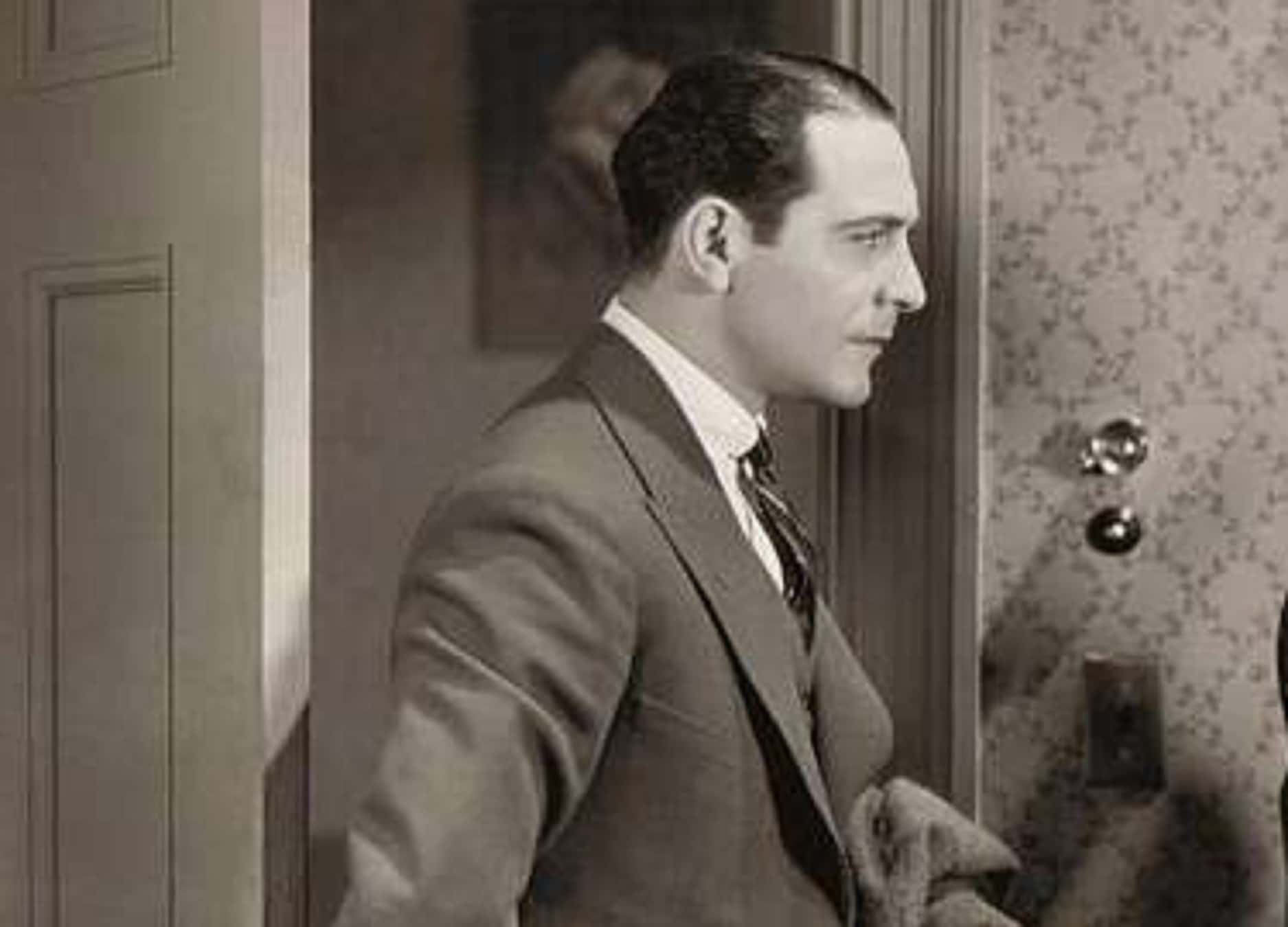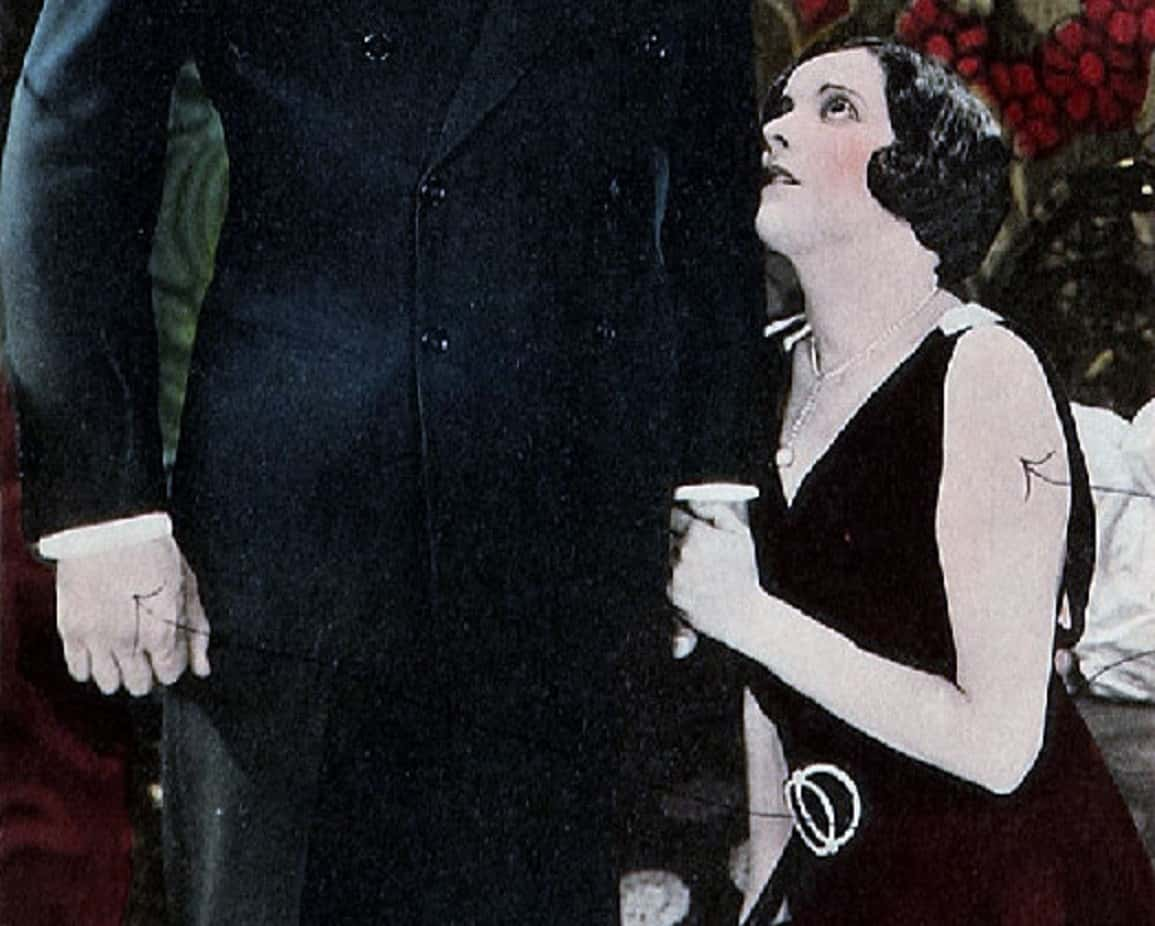Alma Rubens was a 1910s silent film star with nothing but potential—and a ruinous self-destructive streak. Whether her abusive marriages caused her narcotics addiction or her narcotics addiction caused her abusive marriages, no one will ever know for sure. But one thing is certain, this silent film siren lead one sorrowful life.
1. She Didn’t Know Who She Was
No one knows the source of Alma Rubens’ deep sorrow and sadness but she seemed to suffer from a crisis of identity her whole life. She was born to John Reubens, a Jewish German immigrant to San Francisco in 1897. However, Rubens denied her Jewish heritage her entire career and identified, instead, with her Irish Catholic mother.

2. She Supported Her Family
By all accounts, Rubens’ childhood was as woeful as her adult years. Both of her parents suffered from poor health and Rubens had to work to support the family. According to a 1932 biography, “Her earnings average about twelve dollars a week, not much for a family of three". In fact, it wasn’t enough. Not by a long shot.
3. She Ate Hospital Food
Despite her meager earnings, Rubens managed to get her mother, Theresa Reubens, into a hospital where she could get the care she needed. From the sounds of it, however, there wasn’t any money left over for Rubens herself. The 1932 biography claimed, “she herself [Rubens] often managed to get along on the food that was left on her mother’s tray".
4. She Escaped To The Theater
As a young girl, Rubens turned to the theatre and acting as an escape from her crippling poverty—she had no way of knowing then that Hollywood would, ultimately, be her undoing. By chance alone, however, the theatre would also give Rubens her first (and, frankly, her only) big break. It would also give her first marriage—and a broken jaw.
5. She Was A Stand-In
Rubens was attending a musical comedy when she caught her big break. The story goes that one of the chorus girls fell mysteriously and suddenly ill and Rubens, then virtually unknown, was asked to fill in. By the time the curtains closed, it was obvious to everyone that Rubens was going to be a star—if she could stay out of trouble. That was easier said than done.
6. She Got Some Good Advice
Rubens stayed with the acting troupe into her teens, honing her talents. Somewhere along the line, she met fellow actor Franklyn Farnum who spotted Rubens’ unique potential. He told her that she should try screen acting, as there was good money in it. Given what happened next, however, Farnum’s intentions might not have been entirely noble.
7. She Left Her Father
Rubens followed Farnum’s advice and moved from San Francisco to Los Angeles at just 16 years of age. Curiously, Rubens’ mother accompanied her to the nascent City of Stars but her father remained behind. Theresa Rubens explained, “She’s only sixteen and needs me more than you do[...] Her papa understood, but it was hard for us both".
8. She Shined On Screen
Rubens’ success in the early days of Hollywood was almost immediate. She made her debut in short films, even garnering an uncredited role in D.W. Griffith's controversial 1915 film The Birth of a Nation. In a cruel and ironic twist of fate, one of Rubens’ first film appearances was in 1914’s The Narcotic Spectre, foreshadowing her struggles in the years to come.
9. She Reinvented Herself
From the time she arrived in Hollywood, Rubens tried to reinvent herself and ditch her old identity. In an interview with Photoplay, she said, “As a matter of fact my name is not the same [spelling] as the painter’s. It’s either Reubens or Ruebens—I forget which. I never could spell it. Couldn't remember where the ‘e’ came from. So, I let it go Rubens".
10. She Married Her Mentor
Some years after Rubens arrived in Los Angeles, Franklyn Farnum reappeared on the scene. Where before their relationship had just been friendly (as far as we know), when Farnum showed up in Los Angeles, he and Rubens sparked up a romance. By June of 1918, Rubens tied the knot to Farnum but she wasn’t exactly a blushing bride.
11. She Lied About Her Marital Status
In the early days of Hollywood, celebrity gossip was hard to come by—and Rubens didn’t make it any easier. When the media approached Farnum after his marriage to Rubens, he happily confirmed the nuptials. Rubens, on the other hand, flatly denied being married to Farnum. There might have been a good reason for Rubens’ lies.
12. Her Marriage Only Lasted Two Months
Just two months after being married to Farnum (and lying about it to the media) Rubens filed for divorce. In the divorce proceedings, Rubens revealed that, for the whole two months of their marriage, she had been living in her own personal nightmare. And it all started the day after the Hollywood couple took their vows.
13. She Took It On The Chin
Just one day after saying "I do", Rubens and her new husband made headlines after an intense brawl in a cafe. After that first post-nuptial spat, things only got worse for Rubens. She revealed that, later that same day after they returned home, Farnum slapped her again, this time dislocating her jaw. Further, she alleged that, over the course of the following month, Farnum continued to hit her. Fortunately, she was able to get out of the marriage and back to the screen.
14. She Had A Famous Ancestor
After her divorce from Farnum, Rubens’ career took off. She signed on with William Randolph Hearst’s production company, landing leading roles in major productions. To promote her films, the company falsely claimed that she was a descendant of the famous Flemish painter Peter Paul Rubens. While that was a lie, she did have some hidden talents.
15. She Wanted A Quieter Life
Throughout her career as an actress, Rubens dreamed of a simpler life, one outside of the spotlight. “I wish to goodness I could be a writer,” she said. “Fiction. Short stories. Friends of mine, critics, shall I say, tell me that my ideas are good, but my treatment can be improved upon. That’s enough encouragement to begin with. I’m going to keep on trying".
16. She Looked Like A Character From A Novel
Rubens’ on-screen charms, however, made her perfect for the spotlight. Motion Picture Magazine, for example, wrote, “Alma Rubens looks like a character from the pages of an introspective novel. There is a pallor of skin, a certain depth and darkness of the eyes, hair like folded black wings. Then, too, a repose of manner, a reserve[...]".
17. She Had A Youthful Beauty
If her dislocated jaw left a scar, no one could ever tell. Film critics and audiences alike fawned over Rubens’ “youthful beauty” and her “expressive acting". Almost overnight, she became a box office success well on her way to becoming a Hollywood legend. In fact, she even outperformed the Hollywood patriarch, Lionel Barrymore.
18. She Was Picky
By 1920, Rubens was a bona fide star and could pick and choose whichever roles she wanted. In an interview with Motion Picture Magazine, she said, “I am going from now on, to do only the great things as I see them. I have served my apprenticeship, I think, at the lesser tasks, and I shall do nothing rather than go back to them now”. Unfortunately, that was a lie and the reason behind her break from acting was much darker: Alma Rubens had a serious drug problem.
19. She Got Paid By Any Means
In light of her addiction, Hearst pulled Rubens from her upcoming projects so that she could get clean. Despite her “vacation”, he continued paying Rubens her full salary, sparking rumors of an affair. Both Hearst and Rubens vehemently denied the allegations, which were likely false anyway, given Rubens’ friendship with Marion Davies, Hearst’s girlfriend.
20. She Made An Epic Comeback
Rubens made an epic return to the screen in 1922, starring in a string of highly successful films. According to Variety magazine, “[Rubens] achieves some of the most eloquent pantomime of screen history” and “took hold of the audience” with a performance “that reached genuine emotional expression". But her morphine addiction was only getting worse.
21. She Had “Glassy Eyes”
Rubens’ box office and critical success continued with 1924’s Cytherea. The New York Times wrote, “by far the best performance is that of Alma Rubens who makes a bewitching Argentinean dancer". Sadly, her co-stars didn’t feel the same. They claimed that she was unreliable and noted her “drifting speech and glassy eyes".
22. She Married A Good Man
While she continued struggling with her morphine addiction, Rubens met and married her second husband, Daniel Carson Goodman. As a screenwriter, Rubens thought that Goodman would provide the quiet life she was looking for. Sadly, for Rubens, it sounds like Goodman picked up exactly where Farnum, her first husband, left off. Needless to say, there relationship was very short-lived.
23. Her Husband Struck Her
By the time they announced their marriage, Rubens and Goodman had already been separated for months. Before that, however, Rubens had endured four months of misery. In her divorce filings, Rubens claimed that Goodman had “cursed and swore” at her in addition to striking her “in the face and about the body with his clenched fist".
24. She Was Seeing Stars
As the divorce proceedings unfolded, Rubens kept revealing the horrifying details of her marriage to Goodman. She further alleged that, less than a month into their marriage, Goodman had “knocked her unconscious” while they were on a trip in the Adirondacks. Given what Goodman allegedly did next, it’s a wonder that Rubens survived.
25. She Repeated Herself
Rubens claimed that, in December 1923, Goodman gave her the worst Christmas present ever—even worse than a lump of coal. She alleged that, on Christmas morning, Goodman struck her “across the jaw” with her purse. Unlike with Farnum, Rubens didn’t assert that Goodman had dislocated her jaw. But the similarity in her claims raised some eyebrows.
26. Her Mother Weighed In
Once the media got a hold of the scandalous divorce story, even more details came to light. Rubens’ mother, for example, claimed, “[Goodman] pulled [Alma’s] hair and slapped her. I asked him to get out of the house because he wasn’t supporting her or paying for the house anyway". But Goodman had his own allegations to make.
27. Her Husband Fought Back
Before the divorce trial, Goodman finally spoke to the press. Speaking to Los Angeles Times, he claimed that he had “seen Miss Rubens only occasionally” in the past year. He further cast doubt on her allegations when he said, “...if Miss Rubens suffered from pugilistic complications, it must have been at the hands of some other sparring partner".
28. She Gave The Performance Of A Lifetime
Given her ongoing struggles with narcotics, it isn’t clear whether or not Rubens’ allegations were true. But, clearly, she gave her most compelling performance ever as “the mistreated wife". In the end, Goodman didn’t contest any of Rubens’ claims during the trial and the court settled the divorce in Rubens’ favor.
29. She Won The Luck Lottery
In May 1925, Rubens and her mother received some unexpected good news (for once). Apparently, a wealthy Australian man by the name of Michael Hayes had passed in 1908 without any known heirs. The executors of Hayes’ estate tracked down Rubens’ mother, a distant relative of Hayes’, and cut her check for $300,000.
30. She Was Always In The News
For most of 1925, the press couldn’t keep Rubens’ name out of the headlines. First, there had been the announcement of her secret marriage, then her scandalous divorce and the news of a windfall fortune from an exotic land—all peppered with stories of narcotics. But, in January 1926, Rubens gave the tabloids their most scintillating scandal yet.
31. She Never Lost Her Faith
Rubens met and married fellow actor Ricardo Cortez—a burgeoning star—in January 1926. While the newspapers originally celebrated the marriage, saying that Rubens’ “faith in marriage had not been shattered” there was one small problem. Rubens and Cortez had actually gotten married days before the courts finalized Rubens’ divorce from Goodman.
32. She Was A Polygamist
The District Attorney for Riverside County where Rubens and Cortez had gotten married was not as entertained by the scandal as the public. He called Rubens’ and Cortez’s marriage “an act of bigamy” because Rubens did not yet have the “final decree". Even worse yet for the newlyweds, he vowed to investigate their marriage.
33. She Got Off On A Technicality
To avoid further scandal (and a potentially very embarrassing investigation), Rubens and Cortez found a legal loophole. The couple agreed to get remarried once Rubens received the final decree for her divorce from Goodman. Unfortunately for Rubens and Goodman, that was the least troubling scandal in their marriage.
34. She Wanted To Retire
Rubens told her new husband that she was going to retire from acting, presumably to spend more time on their marriage. However, while she might have had every intention of stepping back from the spotlight, she had already signed the paperwork to appear in a few more films. But that wasn’t even the worst lie she told him.
35. She Told A Lie Of Omission
In 1928, Rubens and Cortez finally found the time to take their honeymoon, traveling to Europe. And that’s when Cortez found out about Rubens’ dark secret—i.e., her narcotics addiction. Allegedly, she hadn’t bothered to tell him about it and he hadn’t ever seen her “using". Suffice to say, when they returned from their trip, she and Cortez separated.
36. She Disturbed The Peace
Following her return from Europe, Rubens’ physical and mental condition began deteriorating rapidly as her morphine addiction spun out of control. The film star’s neighbors filed a complaint with the LAPD alleging that Rubens was disturbing the peace. While her behavior might have been peaceful, it was definitely disturbing.
37. She Never Found What She Was Looking For
According to her nosy—or simply concerned—neighbors, Rubens would wander around the neighborhood at all odd hours of the night. Her neighbors further claimed that, when she wasn’t hosting loud parties, she would walk around with a flashlight, looking for some unspecified object that she never actually found. Her happiness, maybe?
38. She Was An Escape Artist
Rubens’ odd behavior landed her at a sanitarium where health authorities hoped she might recover. But, even getting Rubens to the facility proved dangerous. On the way to the sanitarium, Rubens attempted to stab one of the attending doctors. Even at the sanitarium, she proved difficult to manage, making several daring escapes.
39. She Looked Pitiful
Even prior to her time at the sanitarium, Rubens’ struggles with narcotics were an open secret. For example, one reviewer titled his article on her 1926 role in Siberia “So Pitifully Thin, Alma Looked [the] Role”, saying that she had “acquired a sylph-like form” and “resemble[d] a famished exile". It was not a compliment.
40. She Took The Credit
In her brief moments of recovery, Rubens opened up about her addiction. Initially, the media reported that Cortez was to thank for her return to health, but Rubens set the record straight. “It was my own battle,” Rubens said. “My husband [Cortez] contributed very little toward helping me, most of the money coming from women friends".
41. She Left Behind A Mess
Rubens can’t take all of the credit for cleaning up her act. While she was in the state hospital, she left behind a string of legal issues for her mother and Cortez to deal with. There was the driver who claimed that Rubens had attacked him after an accident, her maid who claimed the same, and a massive federal investigation into the illicit use of narcotics in Hollywood.
Oh, and she wanted to divorce Cortez.
42. She Never Returned To Film
Following her release from the psychiatric hospital, Rubens never returned to screen acting. But she had a small career comeback with a successful return to the stage in New York. After a great show with multiple curtain calls, Rubens declared herself to be cured of her addiction and recounted her stay in Patton State Hospital to the press.
43. She Was Surrounded By Crazies
In a truly heartbreaking interview, Rubens told the world about her time in the psychiatric hospital. “I was placed in a ward with maniacs,” she said. “I was refused permission to see my mother; my books were taken away from me. I couldn’t endure that, together with the craving I had for narcotics. I reasoned that nothing could be worse than the position I was in".
44. She Was Pleading For Help
Rubens gave a harrowing plea for help in her last interview with the Los Angeles Examiner. “As long as my money held out I could get [narcotics],” she said. “I was afraid to tell my mother, my best friends. My only desire was to get [narcotics] and take them in secrecy".
45. She Wished For Things To Be Different
If things had gone differently, Alma Rubens might have been one of the great silent film stars like Lillian Gish or Charlie Chaplin. “If only I could get on my knees before the [authorities] or before a judge,” she lamented, “and beg them to make stiffer laws so that men will refuse to take any dirty dollars from the [people] who sell this poison".
46. She Was About To Make A Comeback
Following the success of her return to Broadway, Rubens traveled back to Los Angeles, presumably to restart her film career (and divorce Cortez). Sadly, before Rubens could make her triumphant return to the screen, she fell ill with pneumonia. Weakened by years of narcotics use, she quickly succumbed to her illness, passing away in January of 1931.
47. She Went Through It All
In spite of her (horrible) marriages and struggle with addiction, Rubens would probably have done it all over again. In a 1930 interview, said that she really went through the wringer. However, “It was worth fighting for,” she recalled as she thought about the eight curtain calls and bouquets of flowers at her feet at her last major performance.
48. She Turned The Other Cheek
Relationships were always a sore point for Alma Rubens. During her first divorce, Rubens recounted that she and Franklyn Farnum went to a cafe a day after their marriage—and it wasn’t exactly a honeymoon. Rubens claimed that Farnum “cursed and swore” at her and then “publicly slapped” her across the face. Believe it or not, but that was the high point of their marriage. As we know, it was all downhill from there.
49. She Was Hiding A Dark Secret
In an attempt to hold onto a damaging secret, Alma Rubens lied to the media—her reasons for taking on fewer roles in 1921 was much darker than she let on. Despite being at the height of her fame, Rubens didn’t appear in a single film that year. In actuality, it looks like Rubens stepped back from the spotlight because of a narcotics and painkillers addiction.
50. She Eloped
Just like with her first marriage, Rubens kept her adoring public guessing as to whether or not she was in love. Unbeknownst to anyone, she and Goodman eloped in Connecticut in 1923 but didn’t make the announcement until a year later. By then, there was already trouble in paradise—and this time, Rubens barely survived it.
51. Her Mother Had Her Committed
The late 1920s were a rocky time for Alma Rubens. It was then that she found herself in and out of sanitoriums—and not always by her own choice. In May of 1929, both Cortez and Rubens’ mother agreed to have the morphine-addicted star committed to Patton State Hospital, a psychiatric hospital in San Bernardino. For a time, it seemed like the doctors had cured Rubens of her addiction. Yet, as we now know, Rubens' addiction followed her like an ominous shadow for the rest of her life.







